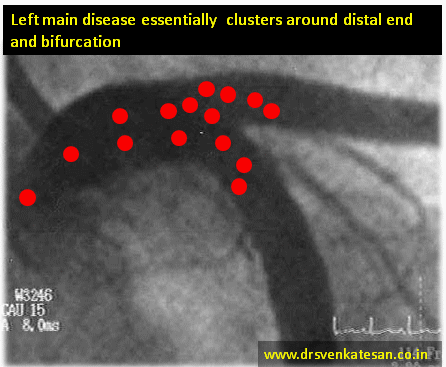Any new ST depression occurring during EST is sine qua non for inducible ischemia.But,this rule does not uni-formally apply in all 12 leads .ST depression occurring is certain leads is more important. While severe global ischemia can depress ST segment in most leads ,factually only the leads V 5 and V6 predict true Ischemia.This because , bulk of LV muscle mass faces these two leads.
Isolated ST depression in inferior leads during exercise
- Is a frequent issue occurring at the peak exercise.
- Is least predictive of significant CAD.
- The exact mechanism is not clear.
- Some continue to believe it is indeed significant .
- We have observed isolated ST depression > 2mm in inferior leads with significant CAD.
- What really matters is the quantum of ST depression , symptoms, and exercise time and preexisting CAD .
Probable mechanism
- Apart from true ischemia ,ST depression may indicate relative sub endocardial strain rather than ischemia.(By the way can simple stretch can cause ST depression ?)
- The Infero posterior surface of heart represent right ventricle .RV volume overlooked peaks exercise.Some think it represents acute raise in RV load during peak exercise.
How to report such EST ?
You can report it as such, what you have observed.
- ST depression noted in Inferior leads at peak exercise.
- Mention whether it was angina free,
- At what METS,
- Total exercise time .
If you are statistically inclined you can also mention the likely hood of CAD by positive predictive value (PPV) of the test (Low with isolated Inferior ST depression )
If you are really confused , and do not want to scratch your brain we have the most convenient terminology invented by cardiac physicians ie Borderline EST, or Mildly positive EST “
Should we do Angiogram for such patients ?
In this era of catching normal people who attend master health check ups for a day care CAG . . . it is not all a crime to do angiogram in a patient who shows suspicious ST depression in three of his leads (2,3,AVF) especially if he also complains of vague chest pain.
Alternate investigation
Of course , we always have the luxury of using MDCT that can stunningly photograph the coronary arteries.
It is a mystery investigation, if it comes entirely normal every one is happy.Even slightest defects in the photography has a potential to confuse both physician and the patient .
What I do ?
I hesitate to do routine CAG if ST depression occur exclusively at peak exercise beyond 10-12 METS , which disappear fast.(Many times we can apply this rule to classical ischemic ST depression of lead V4 as well !)
ST depression in any leads (with any degree) following an episode of ACS seems to be important.
Related topic










